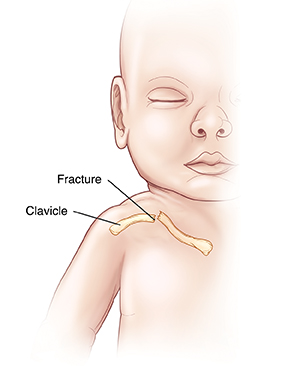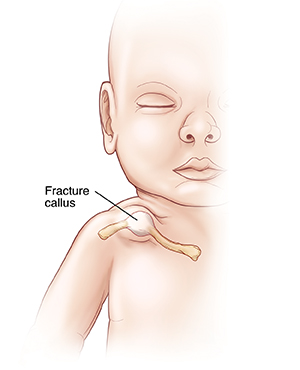Your newborn has a broken collarbone (clavicle). This is a common and treatable problem in newborns. Babies can easily break (fracture) their clavicle as they pass through the birth canal during birth. Large birthweight babies are more likely to have these fractures. The clavicle almost always heals with no problems.
What are the signs of a broken collarbone?
-
Your baby may hold the arm bent in front of the chest and not move it. This is called “pseudo paralysis.” The arm is not paralyzed. But moving the arm may be painful, so the baby doesn't move it.
-
The broken area of the collarbone may move when pressed on, and it may feel like it's “crunching.”
-
A bump may be seen on the collarbone. This is called a fracture callus and is a sign that the fracture is healing.
How is a broken collarbone diagnosed?
The fracture may be found when the baby is examined soon after birth. An X-ray may be done to confirm the fracture. In some cases, the break is so mild that it isn't diagnosed until the fracture callus begins to form and a bump is noticed at the collarbone.
How is a broken collarbone treated?
Collarbone fractures heal quickly on their own without treatment. The healthcare provider may advise keeping the infant’s arm and shoulder still for a few days. If so, this is done by putting the infant’s arm in a sling or pinning the infant’s sleeve to their shirt.
What are the long-term concerns?
Even for serious fractures, healing is usually excellent with no long-term problems. A bump may remain on the collarbone over the area of the break. This bump will slowly go away over time.
Featured in



